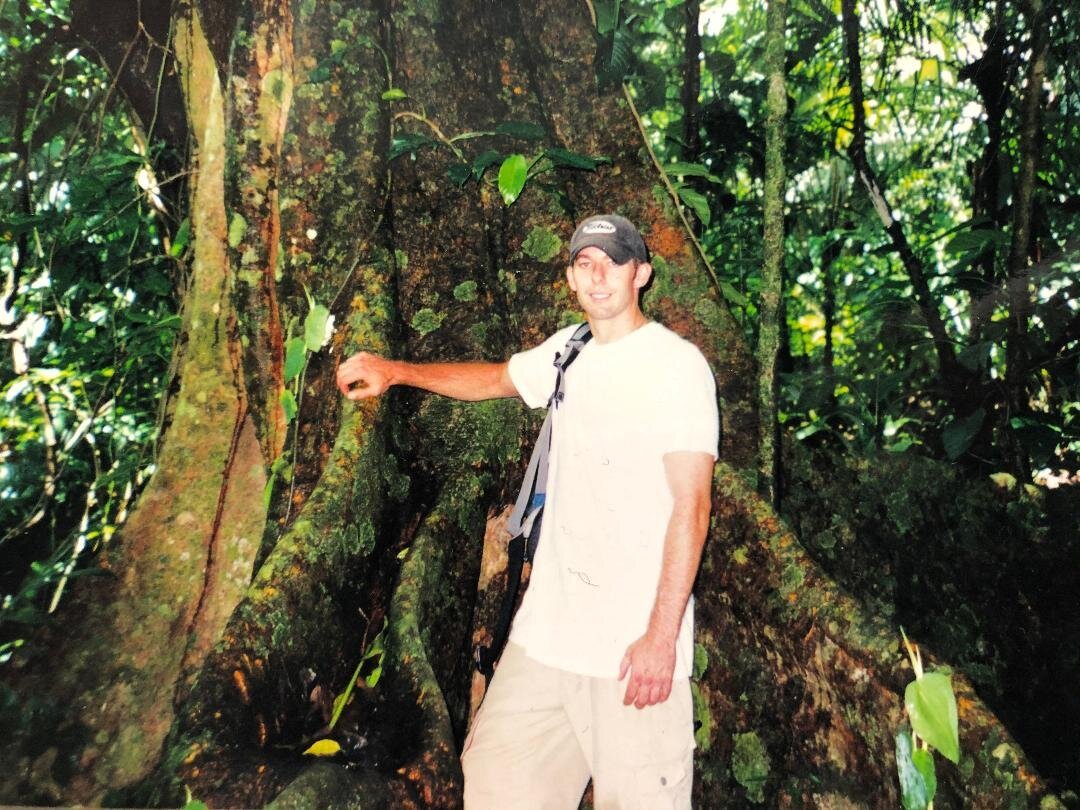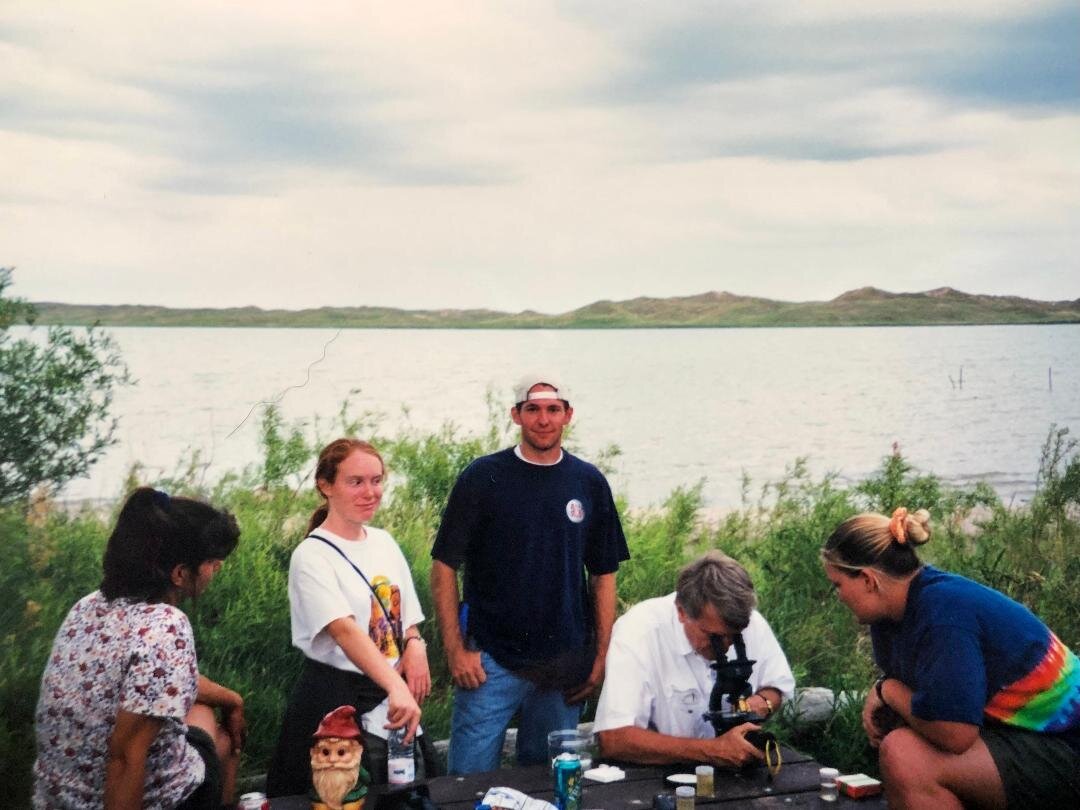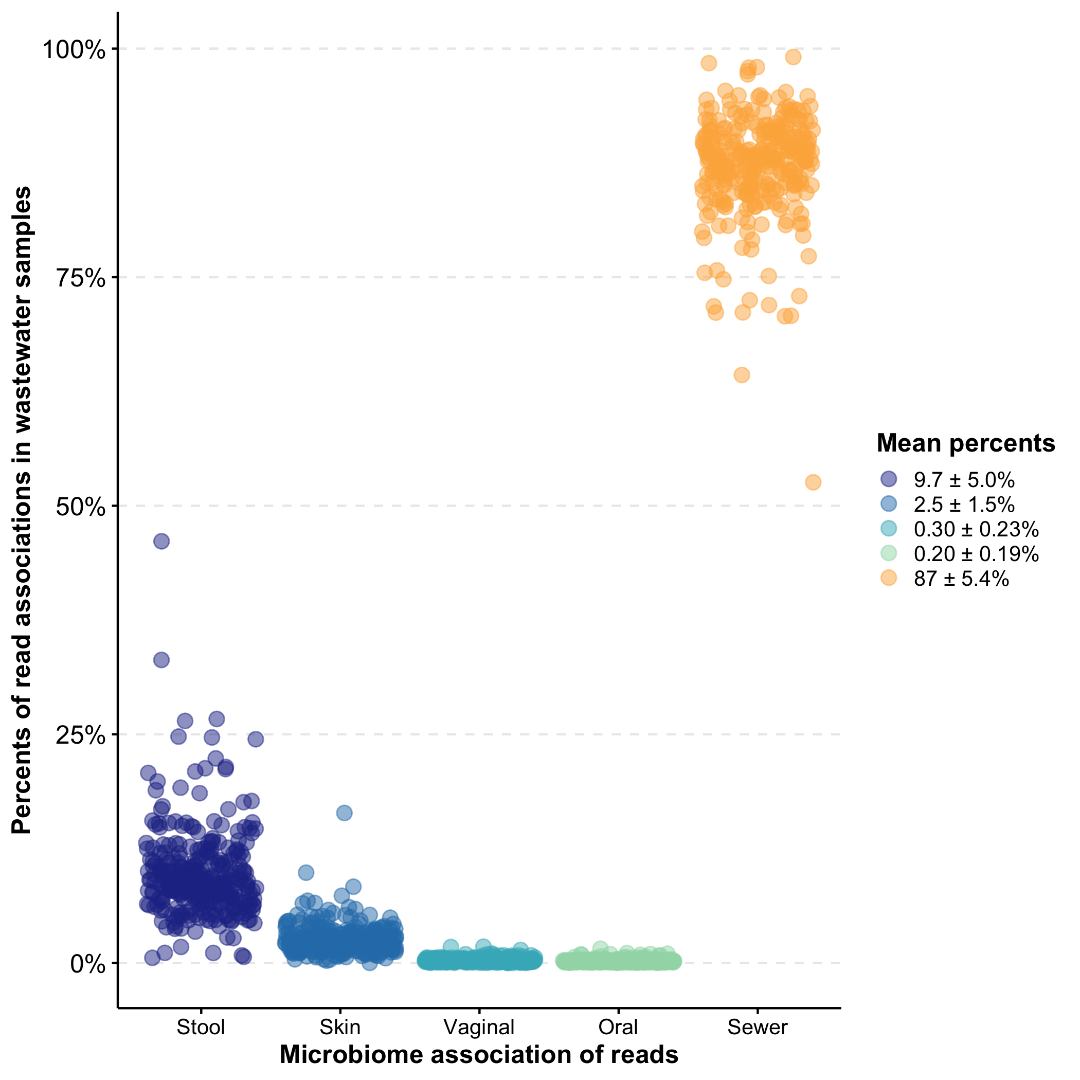Dr. Ryan Newton
Discovering New Microbial
Communities
“It’s a relatively new ecosystem. It’s probably still rapidly changing and developing in ways we don’t understand. That makes it a fascinating place to look—because it’s new, it's changing—but also has implications for our urban city processes, wastewater movement.”
Meet Ryan. Dr. Ryan Newton at the UW-Milwaukee School of Freshwater Sciences has the exciting privilege of exploring life at the microbial frontier. His lab is discovering new communities of microorganisms that live in our sewer pipes and our Great Lakes aided by technologies that weren’t even invented yet when Ryan was in grade school.
Just as the invention of the telescope allowed astronomers to observe and catalog distant stars and galaxies—leading to a fundamental shift in our understanding of our place in the universe—recent advances in genomic sequencing and microscopy have opened up a new realm of discovery, allowing scientists like Ryan to learn totally new knowledge about freshwater microbes that no one has before. “It’s a great time to be a microbiologist and exploring life on this planet,” he says.
Ryan’s work has helped reveal a major surprise about the microbes inhabiting urban sewer systems—with global implications. The research started as a way to support public health efforts to identify a better genetic signal for fecal contamination. But to identify a good signal, you have to understand the baseline of all the genetic material flowing through a waste system. Recent advances in genomic sequencing over the past decade now allow scientists to ask those kinds of questions. Ryan’s lab sequenced DNA found in water samples from our sewer pipes to describe “who’s” living there. Ryan expected to find a blend of microorganisms like those from the human gut we flush down our toilets or those found lining sewer walls in biofilm, both of which are relatively well known to science. While they found those in small numbers, predominating the sewers they found something else entirely.
“The biggest discovery, the biggest surprise to us, was there is a whole ecosystem of microorganisms living in the sewers,” Ryan says. “We really didn't appreciate that this would be a fully colonized microbial habitat with organisms that were present in sewers around the world. … There’s this huge community of microorganisms that we didn't know existed in the sewers. Most of these organisms do live, as far as we know, in other places, although there may be some where sewers are their primary habitat. But they don’t live together typically in those other places. So this is a new collection of organisms that now live together in a place that's sight unseen. It’s below ground. Most people never think about it.”
While using genomics techniques to identify a more sensitive genetic indicator for fecal pollution, Dr. Ryan Newton’s lab surveyed the genetic signatures from microbes living in our sewer pipes. The results proved surprising. This plot shows how there is a distinct community of microbes living in sewer pipes. The orange cluster of genetic associations shows that the sewers are predominated by a sewer-specific microbial community, which are very different from the communities of microbes flushed into the system from our bodies and wastewater. It turns out these same sewer microbial communities inhabit sewers across the world, though community structure differs based on seasonal or geographic temperature changes.
Ryan’s job is to think about it. He took the Milwaukee results and compared them with sewers around the world. These results, too, were surprising: The same communities of microorganisms inhabit urban sewer systems around the world, though Ryan’s team observes seasonal and geographic variation that seems to be tied to temperature, with two different sets of communities specializing in warm and cold environments.
He compares these novel sewer communities to urban wildlife. Much as squirrels, raccoons, and pigeons have adapted to living above ground in cities, sewer microbes have adapted to make a living underground. From an evolutionary perspective, these communities are relatively young—only as old as our cities’ pipe networks, so in the United States, 100 to 150 years.
“It’s a relatively new ecosystem. It’s probably still rapidly changing and developing in ways we don’t understand. That makes it a fascinating place to look—because it’s new, it's changing—but also has implications for our urban city processes, wastewater movement.”
Could we harness the capabilities of some of these microorganisms in ways that are novel? Ryan asks. “We put a lot of chemicals down our sinks and showers, and businesses dump a lot of chemicals, that go to the wastewater treatment plant,” he says. “Microorganisms that are present in these systems see those chemicals, probably at relatively low doses, but at continual low doses. There may be organisms that are taking advantage of some of those chemicals and breaking them down or transforming them in ways we had never anticipated before. So, it could be a ripe place to look for organisms that are capable of breaking down or transforming chemicals that might be beneficial to us in the future.”
Another frontier involves the Great Lakes, which are understudied with respect to the microorganisms that call them home. Ryan has supported research to understand the diversity of microbial communities found in the open waters of all five Great Lakes, work led by Dr. Maureen Coleman at the University of Chicago, and one of the few genetic sequencing cruises conducted aboard the U.S. EPA Lake Guardian research vessel, which homeports in the slip by the School of Freshwater Sciences. “We haven’t really unlocked the potential or understanding of what the larger role of these microorganisms are in these systems, or what they’re doing, where they are, how they’re adapting to the changing Lakes as they warm rapidly,” Ryan says.
Ryan says his road to science started as a boy with a fascination for analyzing sports statistics. In college at the University of Nebraska, Ryan was on a trajectory to use his head for “Big Data” toward a degree in business. But he decided to major in biology, though at the time he wasn’t sure where that path would lead. As an undergrad he worked in a research lab and took coursework in microbiology, a field in which he saw great potential. Ryan also participated in field schools at the university’s Cedar Point Biological Station and a field experience in Mexico, which confirmed that he could combine his love of being outdoors with research for a fulfilling career. He studied microbiology in graduate school at UW-Madison and started working on lakes and bacteria, his “dream scenario” at the time. Ryan has since studied microorganisms in other aquatic systems, including rivers and the coastal ocean, before taking his position in Milwaukee where he also supports engineering work in drinking water systems. “These routes are never straight lines. That’s for sure. It’s been an interesting journey.”
At the School of Freshwater Sciences, Ryan appreciates the interdisciplinary culture. He says he’s also learning from colleagues how to integrate discovery-based research with applied research that demonstrates direct benefits to society. He points to CRISPR/Cas-9 gene editing, recently recognized with a Nobel Prize in chemistry, as an example of a revolutionary applied science tool flowing from discovery-based research of microorganisms in the water.
“It was found because people were exploring the oceans,” he says. “They identified a new—you could almost call it a primitive immune system for bacteria and how they fight off viruses. Bacteria are being lysed by viruses every day on a massive scale. Almost 30% of bacteria that live in the oceans and lakes get blown up every day by viruses. There’s a constant arms race that goes on. They found this editing tool that bacteria had developed over time to deal with that. Turns out, you can edit any DNA with that. And now that’s the most hotly and widely used technology in molecular biology today. It’s leading to all sorts of unbelievable discoveries that weren’t even close to being available five, seven years ago.”
For Ryan, it’s an exciting time to be a scientist.
“It's an enormous habitat, interconnected,” Ryan says of our urban sewer networks. “We don’t really know a whole lot about the microbial movements or what they’re doing in this system. It’s a very fascinating and completely unexplored realm.”

Young Ryan Newton on a University of Nebraska biological field program in Mexico, another experience that shaped his passion for a life of science. Source: Dr. Ryan Newton

Young Ryan Newton, center, at the University of Nebraska Cedar Point Biological Station. The experience nurtured his interest in science as a career and shaped his focus on freshwater systems. Source: Dr. Ryan Newton

While using genomics techniques to identify a more sensitive genetic indicator for fecal pollution, Dr. Ryan Newton’s lab surveyed the genetic signatures from microbes living in our sewer pipes. The results proved surprising. This plot shows how there is a distinct community of microbes living in sewer pipes. The orange cluster of genetic associations shows that the sewers are predominated by a sewer-specific microbial community, which are very different from the communities of microbes flushed into the system from our bodies and wastewater. It turns out these same sewer microbial communities inhabit sewers across the world, though community structure differs based on seasonal or geographic temperature changes. Source: Lou LaMartina, student in Dr. Ryan Newton’s lab.

